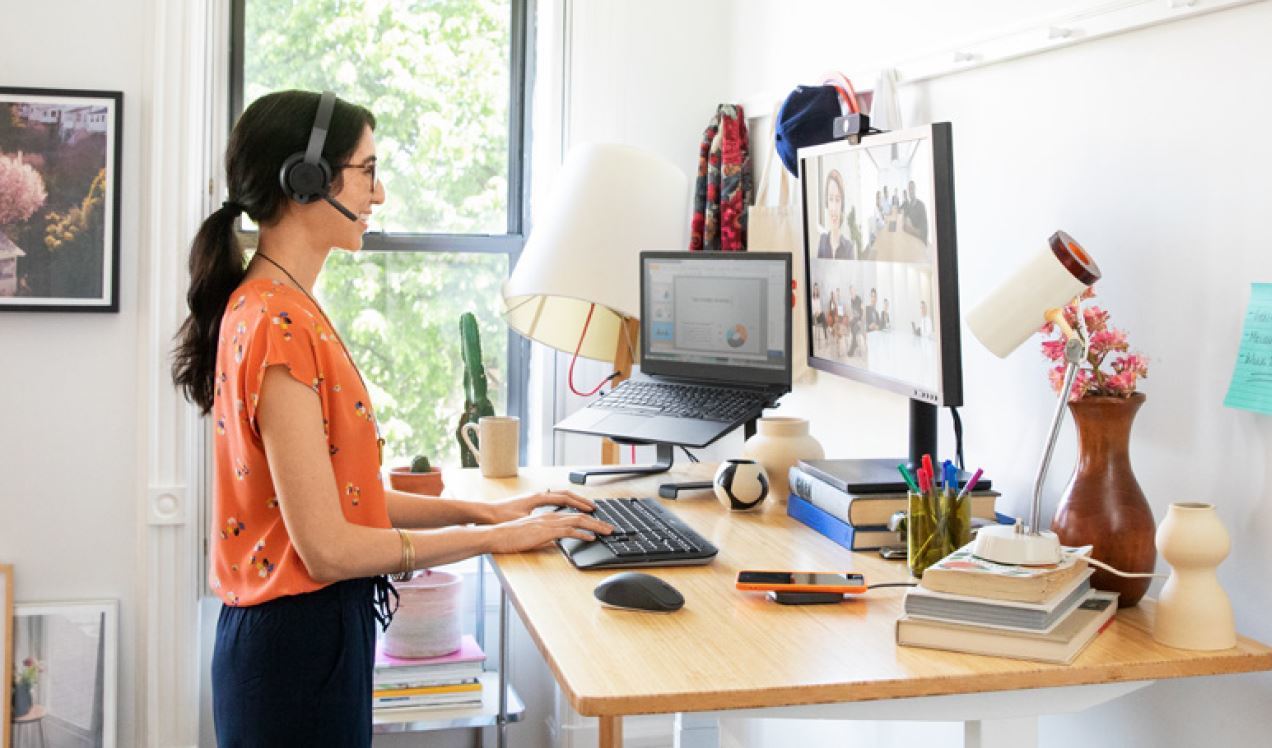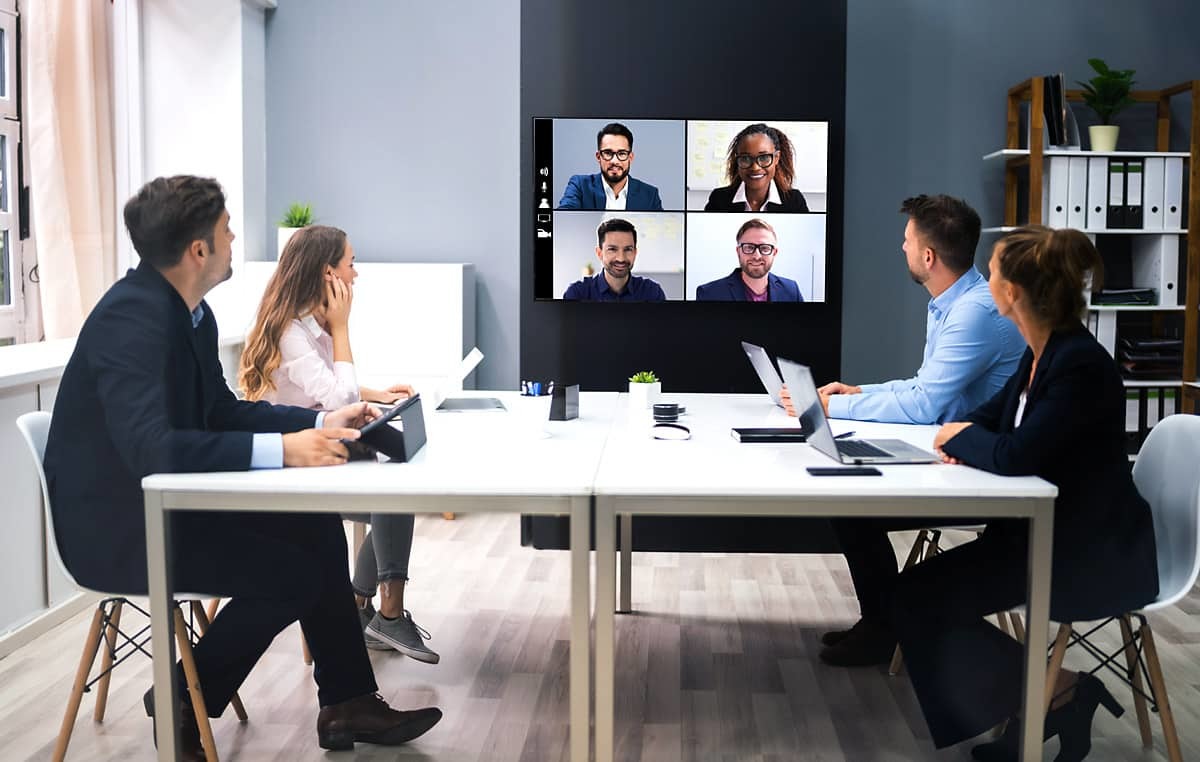Try and picture hybrid work. More likely than not, what you have in mind looks nothing like what’s actually out there.
You already know what happened and how the world has changed since 2020. We all abruptly and rapidly switched to a remote model and figured out how to make it work. We went from interacting face to face with colleagues on the daily to having a home office and communicating with virtual shadows of our colleagues via Teams or Zoom. It was such a foreign experience, but we got over it quickly and learned how to make the best of it.
Fast forward to today, many of us have returned to the office and even more embrace some type of hybrid work arrangement. When you think of it, your idea of hybrid is typically something like this: You work most days at home, talking to people on your company’s platform of choice, and a few days a month, you make an appearance at the office to socialize. One side means being tied to your desk and having meetings on your computer all day. And the other, an image of freedom, you socializing with your coworkers the old-fashioned way, without needing laptops and WiFi and all that.
Does it, though? Here are a few reasons why that’s a highly idealized and practically inaccurate picture of how hybrid work is really done.
First of all, even when you’re at the office, you’ll still find yourself needing to join meetings with those who are not. For obvious reasons, most organizations are implementing staggered schedules for on-site work, so the likelihood of everyone being present in the same building to have face-to-face, in-person gatherings is close to nil. Someone is still going to call in, and you’re still going to have some of your meetings online.
Secondly, just because you used to have physical work interactions prior to 2020 doesn’t mean your psyche is still geared towards them. We’re finding more and more in the field that people’s brains have been rewired enough so that even in person, they’re still looking for that familiar experience of sitting at their desk in front of a camera. People have become accustomed to having their own little box at home, armed with a computer, one or two screens, and the Teams app. Since the rise of WFH, workers have adjusted their expectations of what a meeting should look like. So, when these expectations are not met, staff find themselves quite outside of their comfort zone as they return to in-office work.

It’s a textbook case of what was foreign has become familiar, and what was familiar has now become foreign.
As we were designing a hybrid work solution for one of our clients, one of the requests they were adamant about was having a linear format for employees, where they sit side-by-side and have their meetings online instead of sitting around a table and talking to each other. While some might find it effortless to abandon the remote model and all that entails as if 2020 never happened, not everyone is as dynamic.
This was a clear effort to emulate the hybrid feel and help ease staff back into the real world. As a company, we at Compugen have talked about the modern workspace as an ideology. It’s an exercise in agility to move with the corporate zeitgeist, giving staff precisely what they need to perform their roles instead of issuing disparate tools in the hopes that they would figure it all out – and this is an example of that.
Productivity-wise, this format also allows staff to take notes, fire off emails, and set calendar items during the meeting on their laptops.
A setup like this also prevents those on the far end of the meeting from feeling like a fish out of water. Remember when you would get plugged into a boardroom meeting and see a video feed that vaguely represents who’s in attendance and who’s speaking at the time? You don’t feel like you’re completely part of the conversation. This allows those calling in remotely to have the simulated experience of everyone attending from their home office.
On the surface, it seems like a small thing, but collaboration can take a hit when not all participants feel that they are interacting on the same level as everyone else. In-person, we can read off each other and pick up subtleties that, from the wider angle typically found in older video conferencing hardware, would be impossible to perceive for someone not in the room.
For organizations that are farther along the hybrid work spectrum, they might want to go back to their boardrooms and conduct mixed meetings there. But as we have detailed in our Navigating collaboration blog, things are not as straightforward as they seem. Most conferencing solutions in offices today don’t meet the expectations of today’s employees, and it would be unreasonable to think otherwise. After all, before 2020, only 10% of meetings included video. In contrast, we’re seeing statistics of up to 90% today.
There’s a noticeable gap to be bridged, and companies like Microsoft have been making strides in propelling meeting technology with Teams Rooms. Rapid innovations in intelligent audio and video are finding a home in many conference rooms across the globe. Inclusive video layouts use smart cameras to follow whoever is speaking and frame them during the call (pictured in a single-person format as though they’re on the call from their own desk) so that those on the far end of the meeting can have an equal experience with in-person participants instead of feeling isolated.

The meeting rooms themselves are also getting a revamp to make them more dynamic. We’re seeing additions of stand-up spaces, collaboration spots, multiple screens, and virtual light boards, all to create an immersive experience for everyone, whether they’re in the room or elsewhere.
I’m sure a lot more inventive solutions will come out in the coming months, whether for improved functionality, a more seamless experience, or to address bugs as they arise. You’ll be pleased to know that we’ll be here to keep you updated on the latest and greatest out there as we design and implement these systems for our customers. If you’d like to know how you can equip your organization with future-ready meeting technology, do not hesitate to reach out.





.png)